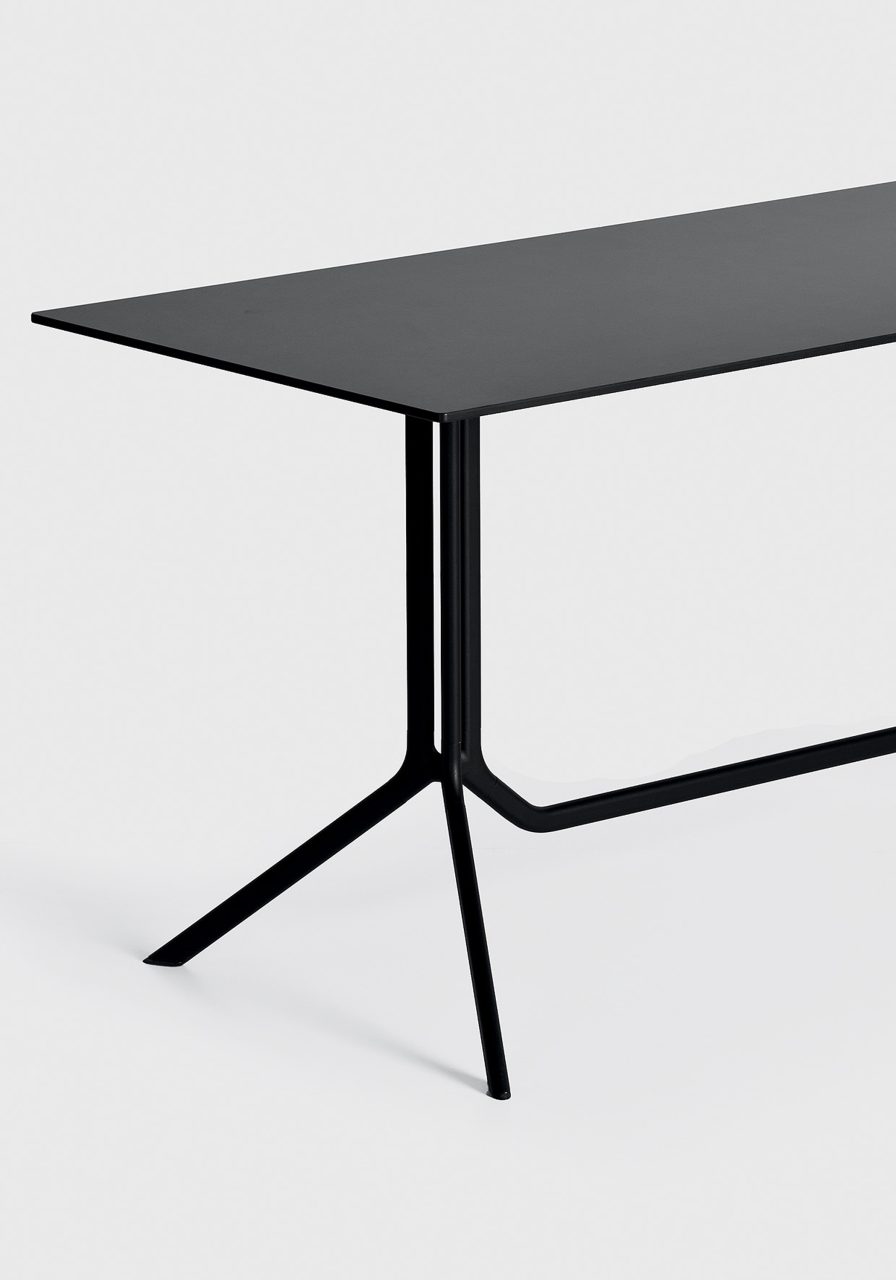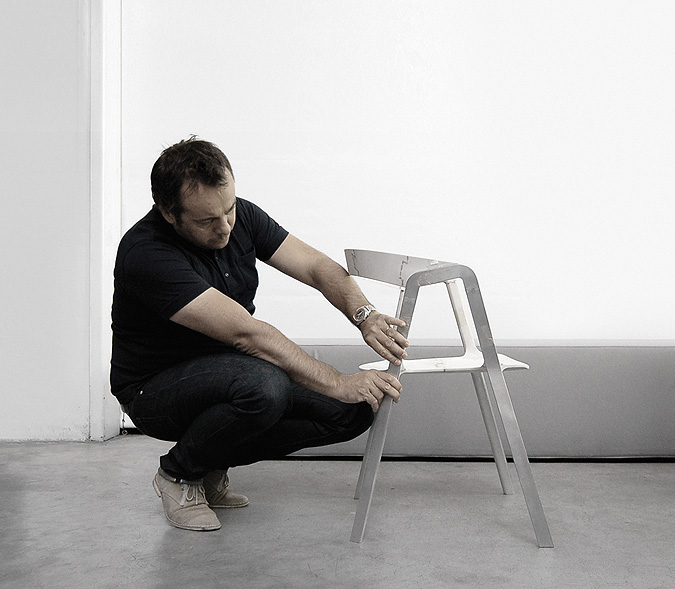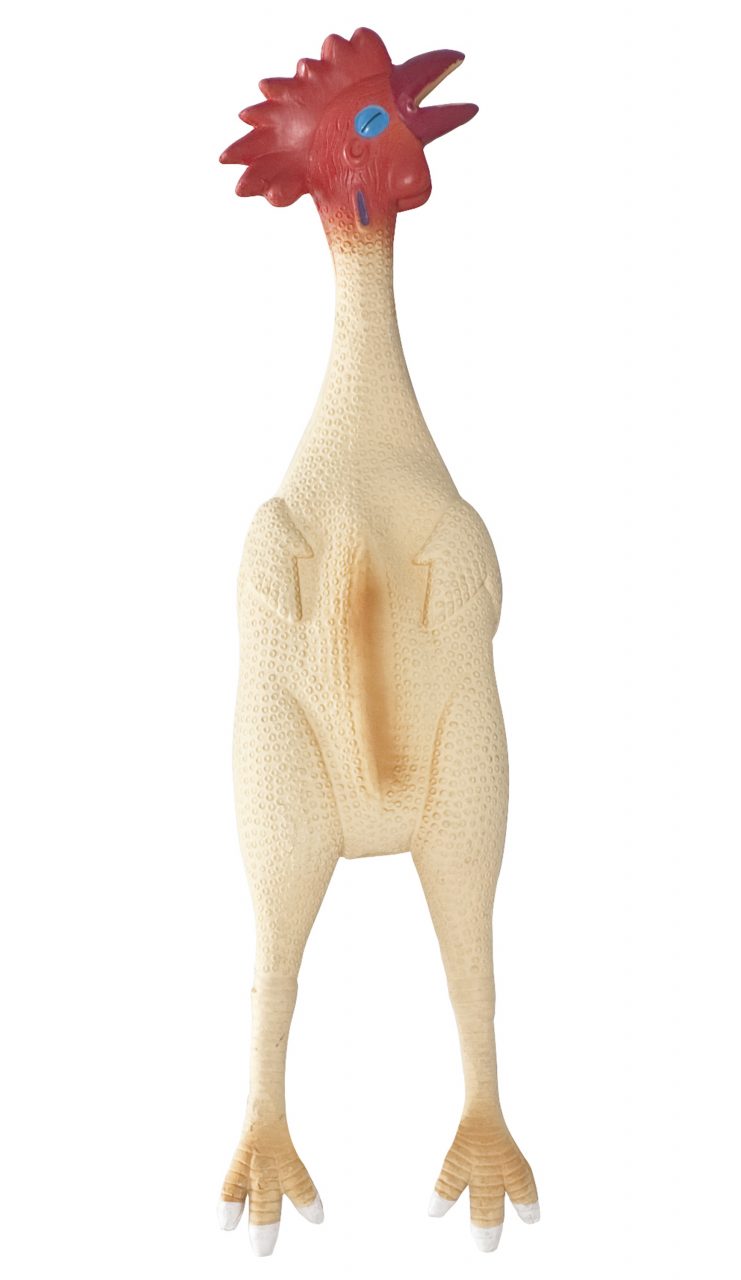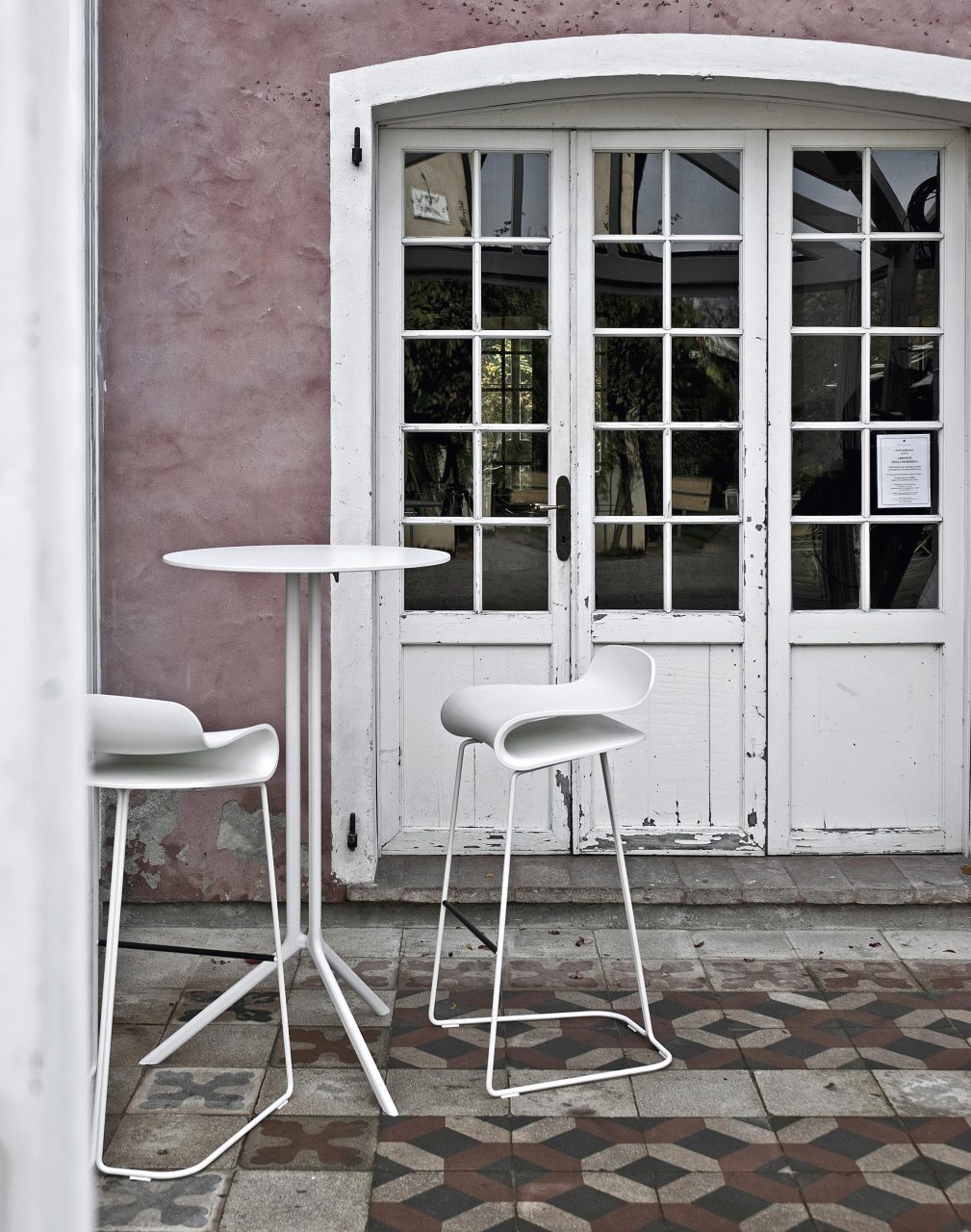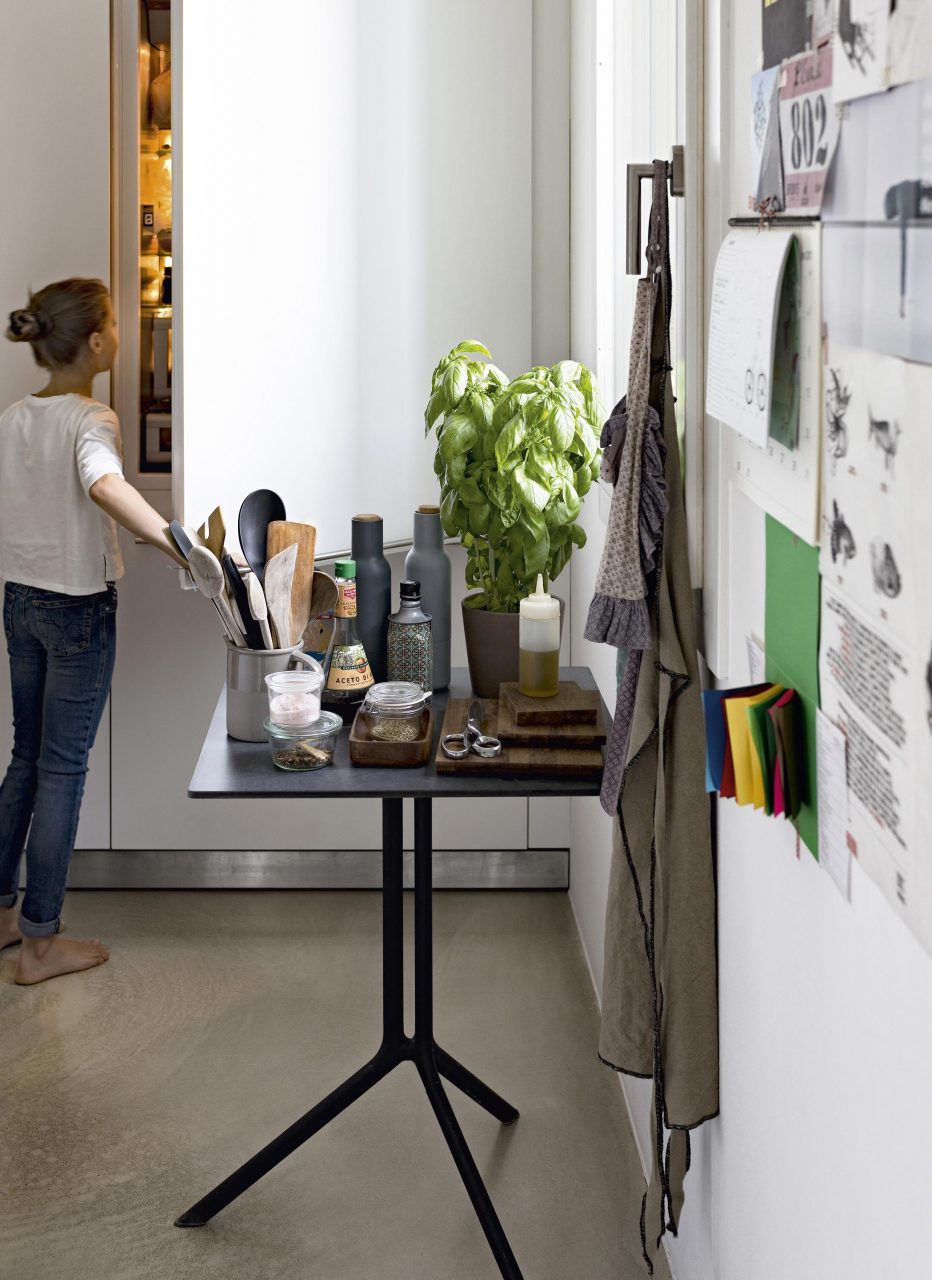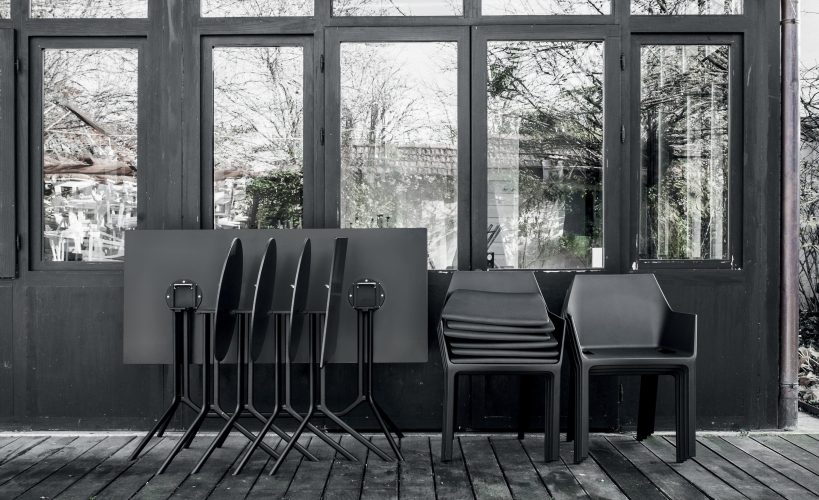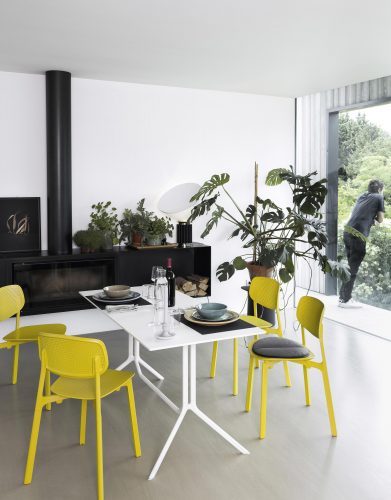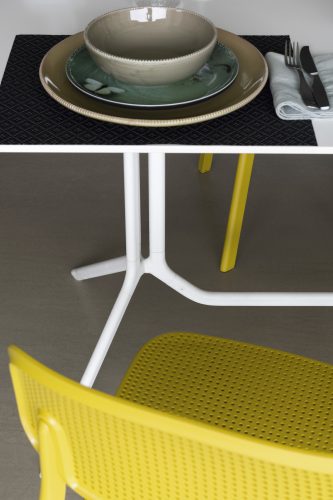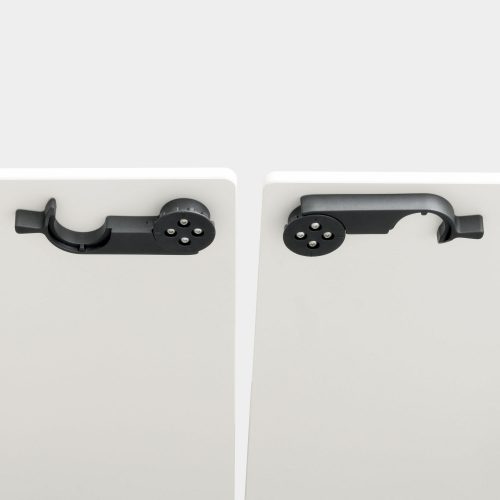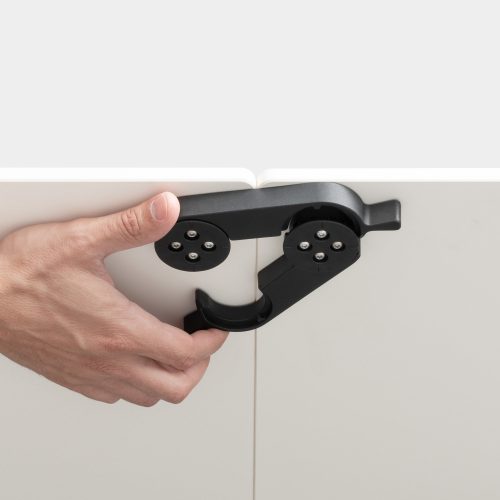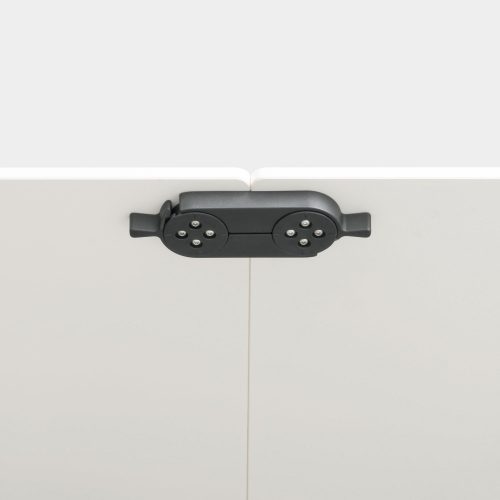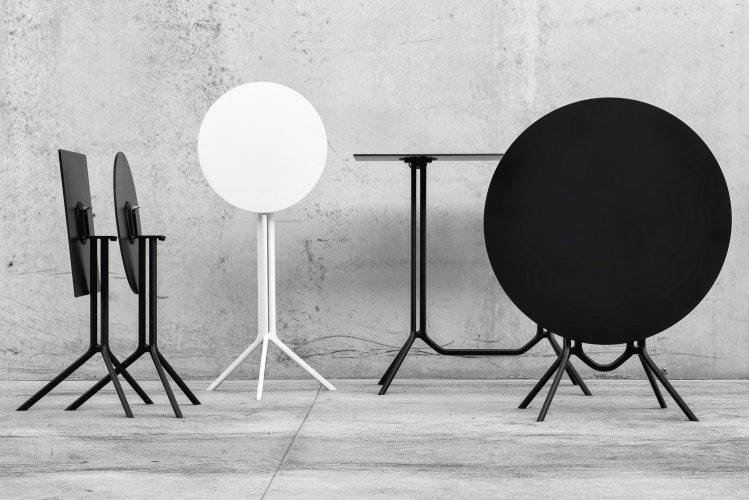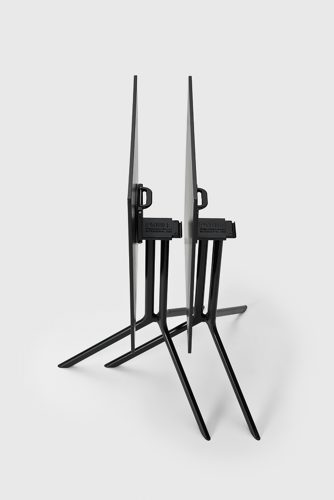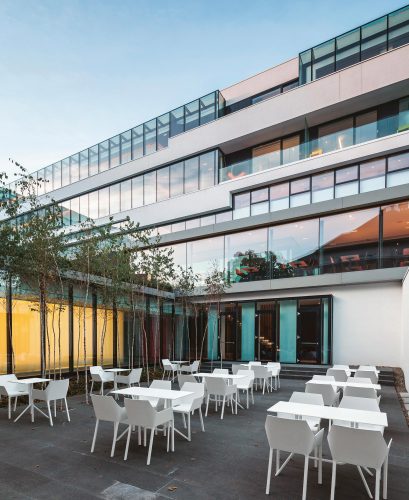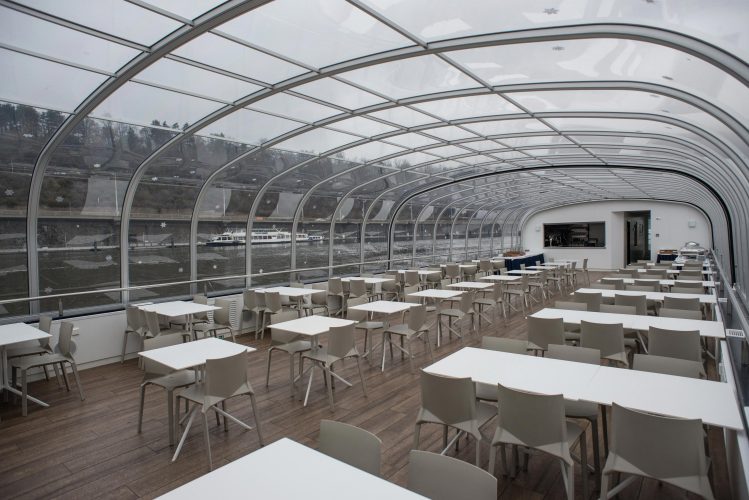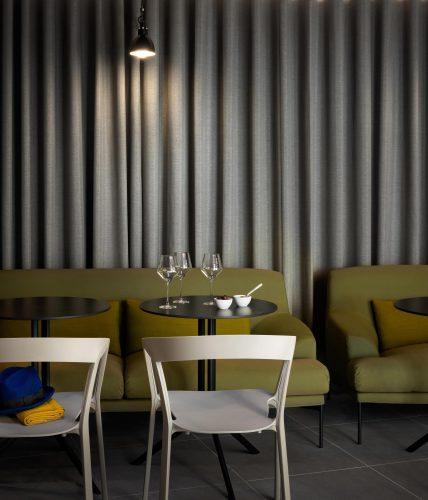Poule
DESIGN BY PATRICK NORGUET, 2011
The name of this occasional table simply reveals its inspiration: the shape of a hen’s foot, reflected in the lines of its pedestal and legs. Patrick Norguet seriously puts this clever idea into practice by designing a practical and versatile collection of tables and occasional tables. Lightweight and durable, they are ideal for use in a variety of contexts. Poule is made of black or white painted aluminium. It has a round, square or rectangular top in laminate or Fenix-NTM®. Poule is also available in a folding version so that it can be stored when not required and where space is limited.
Patrick Norguet
The apparent modesty of Patrick Norguet veils a spirit animated by the concerns of perfection, detail and an object well-made. For the last 12 years, the designer with an atypical trajectory has thus engraved his name on the international design scene with strokes of precision, determination and discretion. He approached the object through an encounter with the industrial world before pursuing his design studies in Paris (ESDI), the man maintains the same privileged relationship with a production tool as with the beauty of forms. There is no place for the self-indulgent expression of the superego, ethereal concepts or media hype. A descendent of Roger Tallon, Castiglioni, and more recent, Alberto Meda, Patrick Norguet considers himself an industrial designer. He is radical in his search for purity, poetic in his sensibility of products and meticulous in his sense of detail. With him, there is no theorization of the design practice, no inclination for confrontation with the rules of good taste, no pursuit of a gratuitous archetype or a new typology without foundation, no quest for excess or unessential by principle. Beyond the pursuit of the ideal line and elegant formal beauty, Patrick Norguet loves the factories, ateliers, materials and the artisans who implement them, as well as deciphering the techniques and processes, and a passion for innovation. He takes an empirical approach to each new project, by responding to the stakes of the firm rather than just the imperatives of contemporary communication. This mental structure is parallel to those of his creations that he likes to imagine dissected piece by piece, like a photo by Guido Mocafico. His taste for the beauty of the mechanical component, assemblage and functionality as well as his refusal for ornament – with the rare exception – sometimes leave us to think that he takes responsibility of the principles stated by Adolf Loos a century ago. However, his esthetic genes are more Nordic than Austrian and his temperament is quite French. With his sense of color, his formal restraint, his elegant purity coupled with character and his continual search for comfort, his work is in direct filiation with the canons of Nordic design. Therefore, it’s not surprising that the designer develops creations with the Swedish brand, Offecct, or that he has assumed with finesse the torch of Pierre Paulin from the Dutch brand, Artifort. It is first and foremost to Italy that he owes his success. Primarily to Giulio Cappellini, who brought him to the limelight in 1999 by manufacturing his instant classic, Rainbow Chair, which is in the MoMA’s permanent collection, and Kristalia, Glas Italia, Poltrona Frau, Flaminia, Lapalma, Lea Ceramiche as well as Alias and Cassina, who see in the designer a real talent to imagine quality products that are also commercial and durable. Plunging with delight into the ADN of design manufacturers, this aesthetic experimenter is accustomed to extracting and rewriting the identity of each brand while sowing the grains of innovation. His professional experience is not foreign to this. Succeeding at the “school of Vuitton”, the designer had learned in his early years how to decipher brands by conceiving the scenography for Dior, Guerlain and Lanvin, as well as engaging complex interior architecture for Lancel. At 43, Patrick Norguet is an essential yet discrete figure in the tricolor scene. Somewhat atypical, he doesn’t lend himself to the exercise of free expression in a gallery, on the contrary, he finds pleasure in the constraint around the creation of a high-end office as much as the lunch environment of a McDonald’s restaurant. His appetence for soft forms and understatement as well as his continual pursuit for the just form and color makes it one of his strengths that is perpetual and, at the same time, always on the tip of the French scene.
